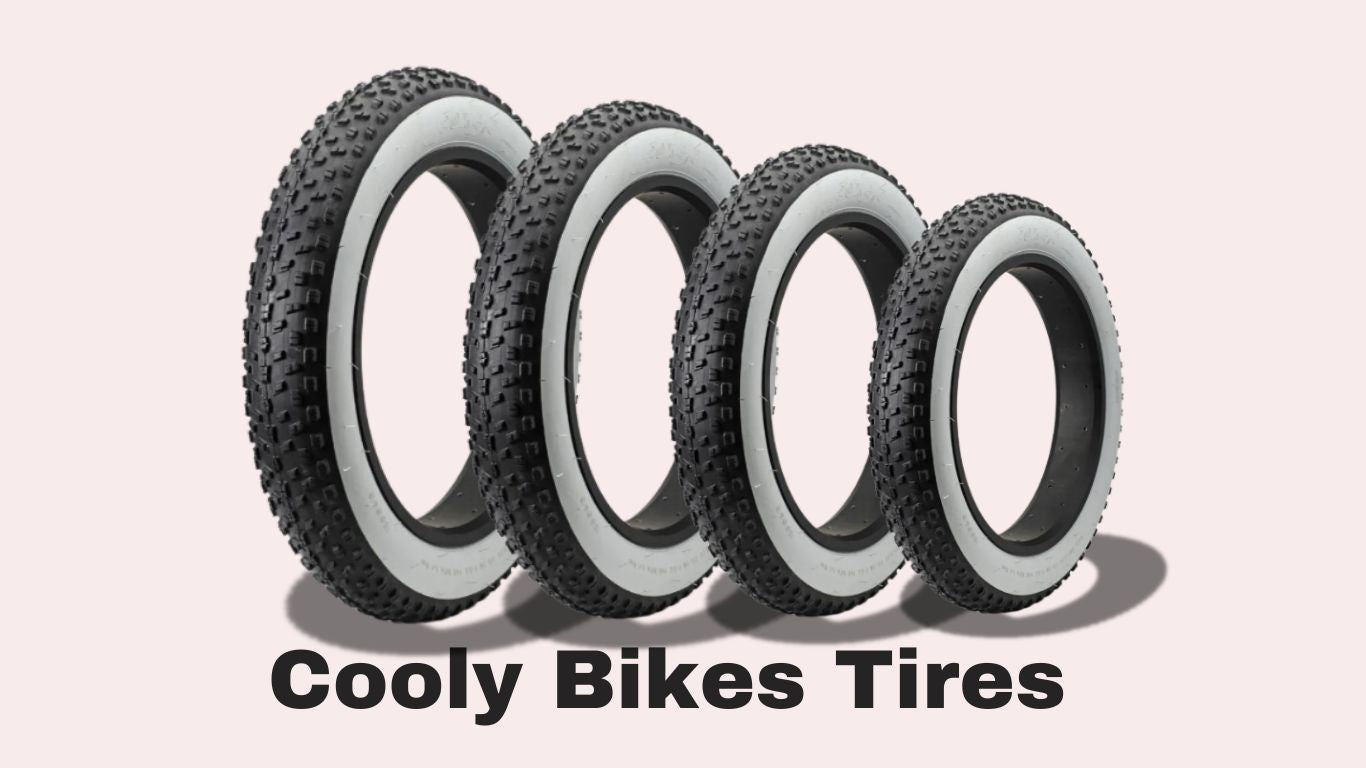
Choosing the Best Tires for Your E-Bike: A Technical Guide( Part One)
As e-bikes become a staple in modern transportation and recreation, the importance of selecting the right electric bike tire cannot be overstated. E-bike tires not only impact the ride's comfort and performance but also play an important role in safety, energy efficiency, and durability. This guide will walk you through the technical aspects of e-bike tire selection, helping you make an informed choice that matches your riding style, terrain, and preferences.
1. Understanding E-Bike Tire Basics
E-bike tires differ from standard bicycle tires in several significant ways. Due to the heavier weight of electric bikes and the increased torque produced by the motor, e-bike tires need to be more robust. They must handle higher speeds, support more weight, and offer better grip. For instance, e-bike tires often feature thicker sidewalls and stronger construction materials to withstand the extra pressure.
As e-bikes gain popularity in areas like the Gold Coast Queensland, Australia, finding the perfect tires for your ride is essential for both performance and safety. At Cooly Electric Bikes, we specialize in providing top-quality e-bikes and accessories, including the highly sought-after White Wall Beach Tire, designed for ultimate comfort and style
Choosing the right tire is essential to ensure your bike performs optimally. It affects everything from how smoothly the bike rides to how well it grips the road or trail. Inadequate tire selection can lead to poor handling, reduced range, and even safety hazards like punctures or blowouts.
The anatomy of an e-bike tire includes key components such as:
- The Tread: Responsible for grip and traction, especially in different weather conditions.
- The Casing: Provides structure and durability, determining the tire's strength.
- The Bead: Ensures the tire stays securely attached to the rim. Understanding these elements will help you choose a tire that meets your specific riding needs.
2. Types of Electric Bicycle Tire
E-bike tires come in several types, each designed for a specific riding style or terrain. Knowing the different tire categories will help you pick the right one for your e-bike.
Road Tires
Road tires are slim, with smooth or lightly grooved tread patterns designed for speed and efficiency on pavement. They offer minimal rolling resistance, making them ideal for city commuting or long-distance rides on smooth roads. Their narrow width ensures faster speeds, though they may offer less comfort on rougher surfaces.
Mountain Tires
Mountain e bike tire features deep, knobby treads for superior traction on uneven, off-road terrain. These tires are perfect for riders who frequently hit trails, dirt roads, or mountainous paths. The thicker tread design helps prevent slipping on loose surfaces, while the wider tire enhances stability and shock absorption.
Hybrid Tires
A compromise between road and mountain tires, hybrid tires are versatile, providing decent grip on both paved roads and light off-road trails. These are great for riders who want the flexibility to switch between city streets and more rugged paths without changing their tires.
Fat Tires
Fat tires are the heavyweights of the e-bike tire world. With widths often exceeding 4 inches, they provide excellent grip and stability on sand, snow, and other loose or soft terrains. However, they also increase rolling resistance, which can reduce battery efficiency and speed on smoother surfaces. Fat tires are a great option for those looking for extra cushioning or extreme off-road adventure.
3. Tire Sizes: How to Choose the Right Diameter
Choosing the correct tire size is one of the most important decisions you'll make. Tire size affects everything from the bike's stability to its ability to handle different terrains.
E-bike tire sizes typically range from 20 inches to 29 inches in diameter. Smaller tires, like those found on folding e-bikes, offer better maneuverability and acceleration, making them ideal for urban environments. Larger tires, on the other hand, provide smoother rides, better stability, and improved rolling efficiency, especially on rougher roads or during long-distance rides.
To determine your current tire size, check the sidewall of your existing tire. The size is usually written in a format like "26 x 2.0," where the first number is the diameter, and the second is the width. If you're unsure, consult your e-bike's manual or a professional to ensure you choose a tire size compatible with your bike.
4. Tire Width and Its Impact
Tire width is another critical factor when choosing e-bike tires. Generally, wider tires offer better grip and comfort, while narrower tires provide faster speeds and better efficiency on smooth surfaces.
Narrow Tires (1.5-2.0 inches):
Best for speed and efficiency, particularly on paved roads or bike paths. These tires have lower rolling resistance, allowing your e-bike to travel further on a single charge. However, they may be less comfortable on rough or uneven surfaces.
Wide Tires (2.1-2.5 inches):
These offer more stability and cushioning, making them ideal for mixed terrains and longer rides where comfort is a priority. Wide tires are also better suited for heavier riders or e-bikes carrying cargo, as they distribute weight more effectively.
Choosing between narrow and wide tires depends on your riding style. If you primarily ride on smooth roads, narrow tires are a great choice. However, if you frequently encounter bumpy or uneven surfaces, wider tires may offer the comfort and control you need.
5. Tread Patterns and Their Importance
Tire tread patterns play a huge role in how your e-bike handles different terrains. The right tread can improve traction, braking, and overall ride quality.
Smooth Treads
Smooth or lightly grooved treads are perfect for city and road use. They offer the least rolling resistance, meaning you can ride faster and with less effort. Smooth treads are ideal for commuters who primarily ride on paved surfaces, where grip is less of a concern.
Knobby Treads
Knobby treads are designed for off-road conditions, providing excellent grip on dirt, gravel, and uneven terrain. These tires are built for rugged use, offering the traction necessary to navigate loose or slippery surfaces. However, they do create more rolling resistance, so they may not be the best choice for road riding.
Mixed Treads
Mixed treads combine the best of both worlds, offering a balance between smooth road performance and off-road grip. These tires are perfect for riders who frequently switch between different terrains and need a versatile option.
Choosing the right tread pattern depends on where you’ll be riding most often. If you're a city commuter, go for smooth treads. But if you love off-road adventures, knobby or mixed treads will give you the control you need.
6. Puncture Proof Tyres for Electric Bikes- Puncture Resistance: A Key Factor for E-Bike Tires
Puncture resistance is one of the most critical features to consider when choosing e-bike tires. E-bikes, being heavier and faster than traditional bicycles, exert more force on the tires. This makes them more vulnerable to punctures from debris such as glass, sharp rocks, or nails.
Modern e-bike tires often come equipped with puncture-resistant technologies designed to minimize the risk of flats. These include:
- Kevlar Layers: Some tires are reinforced with Kevlar belts, a lightweight yet incredibly strong material that helps shield the inner tube from sharp objects. These tires offer excellent protection without adding significant weight.
- Thicker Rubber Compounds: Many e-bike tires are made from thicker rubber to provide an extra buffer against punctures. While this can slightly increase the tire's rolling resistance, the added durability is worth it for riders concerned about frequent flats.
- Anti-Puncture Liners: Certain tire models include built-in liners that add another layer of protection between the tread and the tube. These liners are typically made from high-density materials that block foreign objects from reaching the tube.
To further reduce the likelihood of punctures, it's also essential to maintain proper e bike tire pressure and check your tires regularly for embedded objects. Inspecting your tires after each ride and removing any debris can prevent small punctures from becoming bigger issues.
7. Tubeless vs. Tubed Tires: Which is Better?
One of the most debated choices in e-bike tire selection is whether to go with tubeless or tubed tires. Each has its advantages and disadvantages, depending on your riding style and terrain.
Tubeless Tires
Tubeless tires are increasingly popular among e-bike riders, especially for off-road use. These tires do not have inner tubes and rely on an airtight seal between the tire and the rim. They offer several benefits:
- Fewer Flats: Without a tube, there's no risk of pinch flats, where the tube gets pinched between the tire and rim, causing a puncture.
- Lower Pressure, Better Comfort: Tubeless tires can be run at lower air pressures, which improves traction and provides a more comfortable ride, especially on rough terrain.
- Self-Sealing: Many tubeless tires use a liquid sealant inside the tire, which automatically seals small punctures, allowing you to continue riding without stopping.
However, tubeless tires require more maintenance and can be trickier to install. You also need to ensure your rims are compatible with tubeless tires.
Tubed Tires
Tubed tires, on the other hand, are the traditional option and still widely used on many e-bikes. They offer simplicity and ease of use, making them a solid choice for most riders.
- Easy Installation: Tubed tires are straightforward to install and repair. If you get a flat, you can quickly replace or patch the tube without needing special tools.
- Cost-Effective: Tubed tires are generally less expensive than their tubeless counterparts, making them a great option for budget-conscious riders.
- Wide Availability: Tubed tires come in a wider variety of sizes and styles, making it easier to find replacements.
